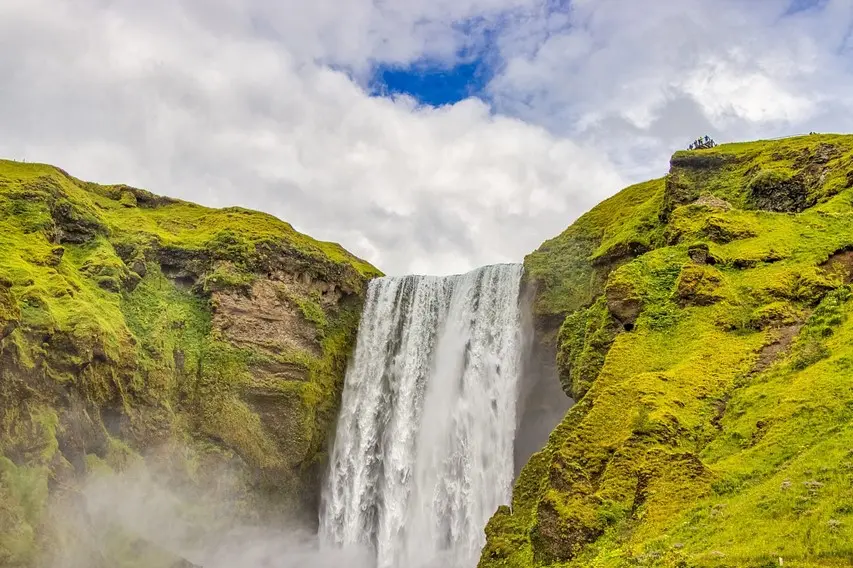When people think of Iceland, images of snow-covered mountains, glaciers, and rugged volcanic landscapes often come to mind. However, despite its name and northern location just south of the Arctic Circle, Iceland’s climate—particularly in summer—is milder than many expect.
This article explores the typical summer temperatures in Iceland, the factors that influence them, regional differences across the island, and how climate change may be affecting Icelandic summers.
Average Summer Temperatures in Iceland
Summer in Iceland officially spans from June to August, though spring-like weather can begin in late May and cooler autumnal conditions often arrive in early September. During this peak summer period, average daily temperatures in Iceland typically range from 10°C to 15°C (50°F to 59°F) in coastal regions, with inland areas and sheltered valleys occasionally experiencing slightly higher highs.
In Reykjavík, the capital and most populous city, located in the southwest of the country, the average temperature in July—the warmest month—is around 11°C (52°F). Daytime highs in Reykjavík can sometimes reach 15°C to 20°C (59°F to 68°F) during warm spells, although temperatures above 20°C (68°F) are rare. For comparison, the highest temperature ever recorded in Reykjavík is 25.7°C (78.3°F), recorded in July 2008.
In Akureyri, located in the northern part of the island, average summer temperatures are often slightly higher due to the town’s inland position and relative shelter from oceanic winds. Akureyri can see summer highs reaching up to 20°C (68°F) during warm periods, although the average remains closer to 11–13°C (52–55°F).
The Role of the North Atlantic Current
One of the primary reasons Iceland’s climate is relatively mild for its latitude is the influence of the North Atlantic Current, a branch of the Gulf Stream. This warm ocean current brings warmer air and water from the tropics, significantly moderating temperatures along the Icelandic coast.
Thanks to this maritime influence, Iceland has a subpolar oceanic climate (Köppen: Cfc) in most coastal areas. The sea has a stabilizing effect on temperatures, reducing seasonal extremes. This means summers are cool but relatively consistent, while winters are cold but not as severe as in inland continental climates at similar latitudes, such as in parts of Canada or Siberia.
Regional Variations Across Iceland
While the overall temperature range across the country is narrow, there are still some notable regional differences:
- South Coast: This region, including towns like Vík and Höfn, generally experiences milder and wetter conditions. Summer temperatures average between 10°C and 13°C, but persistent cloud cover and higher precipitation often make it feel cooler.
- Westfjords and North Coast: These regions can be cooler and windier, with average summer highs rarely exceeding 12°C. However, when sheltered from wind and under clear skies, microclimates can produce warm days.
- Interior Highlands: Largely uninhabited and elevated, the Icelandic interior is much colder, even in summer. Daytime temperatures may not rise above 5°C to 10°C, and nighttime temperatures can drop to near freezing.
- Eastfjords: Generally warmer and sunnier than the rest of the country due to orographic effects and sheltering from prevailing westerly winds.
Weather Patterns and Daylight
What makes Icelandic summers unique is not just the temperature, but also the long hours of daylight. In June, parts of the country experience 24-hour daylight, commonly known as the midnight sun. This allows for extended outdoor activities, even if the air remains cool.
However, the weather is famously variable and unpredictable. It’s not uncommon to experience sunshine, rain, wind, and fog—all in a single day. Tourists are often advised to dress in layers and be prepared for sudden changes in conditions, regardless of the time of year.
Climate Change and Rising Temperatures
Like much of the Arctic region, Iceland has been experiencing significant warming in recent decades. According to data from the Icelandic Meteorological Office, average summer temperatures have increased by approximately 1°C over the last 30 years. Warming is especially evident in inland and highland areas, where melting glaciers and permafrost loss have become more prominent.
As a result, Iceland’s summer weather is becoming slightly warmer and drier, particularly in the north and east. The number of warm days—defined as those exceeding 20°C—is increasing slightly, and longer growing seasons are impacting agriculture and ecosystems.
However, the warming trend is not uniform, and short-term variability due to factors like volcanic activity, oceanic cycles (e.g., North Atlantic Oscillation), and polar jet stream shifts can still produce cooler-than-average summers.
Practical Implications for Visitors
For tourists planning a summer trip to Iceland, understanding the typical temperature range is essential for preparation. While it’s not cold by Arctic standards, Icelandic summers are cool enough to require jackets, hats, and waterproof clothing. Swimming in natural hot springs or visiting geothermal spas like the Blue Lagoon is a popular activity year-round, but particularly enjoyable during the cool summer months.
Additionally, due to low humidity and relatively strong UV radiation at high latitudes, sunburn can occur even on cloudy days. Sunscreen, layered clothing, and sunglasses are all recommended, alongside thermal base layers for hiking or camping trips.
Source: https://secretspotsoficeland.com/
Also Read-Level Up in Paradise: Exploring Goa’s Gaming Scene


